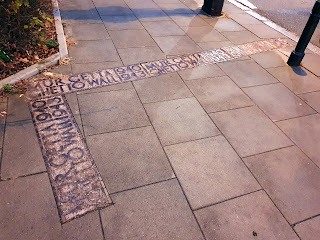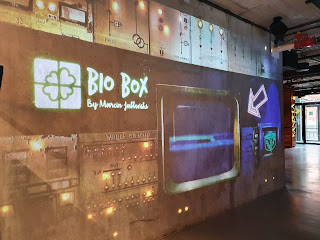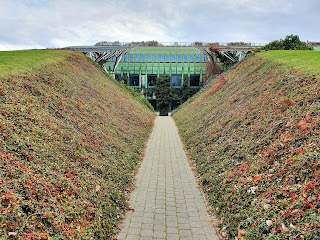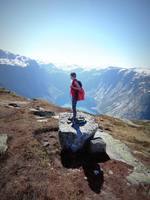TOP 12 places in Warsaw
Warsaw was never my dream destination, but the fact that we took our first flight here with our Donut made it an absolutely unforgettable destination. And Warsaw itself did not disappoint us at all during the long weekend... and it certainly won't disappoint you. Whether you enjoy exploring history, museums, parks, or just strolling around the city and cafe-hopping, either way, you've come to the right place!

Flight with a child - who is not interested, skips the following points :)
- A ticket with Ryanair costs €25 one way for a child under two, which means that Nina had the most expensive ticket. For a return for ourselves we pay €16/person. You didn't think children travel for free, did you? :)
- BUT the price includes the transport of two pieces of baby equipment: stroller, car seat, booster seat or travel cot + bag for a child up to 5 kg. We only take the stroller, which we take to the gate, where we fold it into a bag marked with a Ryanair label and drop it off at the collection point by the front steps of the plane. At the same place, we find it again at the destination airport, even in one piece.
- When going through security, the stroller must be emptied (= baby in arms + contents of stroller on belt) and folded to pass the scanner. Baby's luggage is allowed to contain liquids - baby water, thermos, pouches, snacks etc, they just put it in a special box for you. Supposedly you can even be asked to taste the contents.
- In general, Nina handled it pretty cool. I was a little worried about her ears hurting, so she got a bottle of milk on takeoff and landing, and she certainly didn't seem to be in any pain. The bigger issue was how to keep her entertained and even on the piddy seat. The donut doesn't last longer than a few seconds, fortunately a lot of time was taken up by pissing crisps, so in the end we managed to fight with that too.
Warsaw Modlin
Due to our arrival in the evening, we did not want to tempt Donut's mood any further, and instead chose to stay overnight in Modlin, specifically Apartament Modlin located within walking distance from the airport. Self check-in is done via codes and the apartment has absolutely everything you could possibly need - from cosmetics, board games, Netflix, candles, iron, washing machine, and a fully equipped kitchen. For €52/night a great choice.
If you also have some time in Modlin, I recommend checking out the monstrous Twierdza Modlin fortress, which is one of the largest military structures in Europe. It lies at the confluence of the Vistula and Narva rivers, and is partially open to the public. Historical and current info can be found on the official website here. We didn't go inside because it was closed, but to give you an idea, at least some photos from the outside.

|

|

|

|
12 places not to miss in Warsaw
1. Old town - Surprisingly enough, we'll start with the most famous one; no one leaves Warsaw without walking these cobbled streets. You're also sure to come across the deep red brick walls, which include the beautiful historic Barbican Gate. Both Old Town and Castle Square are lined with typical colourful houses with many cafes and traditional Polish restaurants that had outdoor seating open even in November.
At first glance, no one can tell that the buildings are not original. In fact, the old town was bombed by the German army twice during World War II (1939 and 1944). After the end of the war, restoration began, using all available material from the original buildings. In 1980, the work of the restorers was recognised by the inscription of the Warsaw historical center on the UNESCO list of monuments, and deservedly so.

|

|

|

|
2. Royal castle - is located right at the entrance to the Old Town, so it is virtually impossible to miss it. Today, Krolewski Castle is even open to the public as a museum and gallery. Sightseeing tours include both the representative and private chambers, opening hours including entrance fees can be found on the official website. If you don't feel like going inside, I recommend at least checking out the beautifully landscaped, and free to enter, Royal Gardens.


|

|

|

|

|

|
4. Boarders of the Warsaw ghetto - we'll stay on the Jewish theme for a while. The infamous Warsaw Ghetto was established in 1940 and gradually the Germans herded almost half a million Jews into it. The area grew smaller and smaller, and eventually it was walled off. If you have seen, for example, the film The Pianist starring Adrien Brody, you have a pretty clear idea of the appalling conditions in which people were forced to live here. From 1942 onwards, there were settlement operations here, in which Jews were sent to concentration camps, from which most never returned. If you would like to find out more information, run directly to the Warsaw Ghetto Museum.
Even now, as you walk through Warsaw, you will come across many reminders of the ghetto's existence - memorials, plaques, remnants of walls and the original borders. If you want to search for these places specifically, type Fragment of Ghetto wall, Ghetto wall remnant or Warsaw ghetto boundary markers into google maps.

|

|
5. Lazienki - the only place we used Warsaw's public transport to visit, namely a bus for 4.40 PLN for a 75-minute ride. Lazienki Krolowskie is located in the outskirts of Warsaw, on the left bank of the Vistula River. Originally, there was a spa here, but in the 18th century it was converted into a lavish palace. Over time, the area grew more and more and other buildings were added, such as a theatre, an orangery or a hunting lodge.
The central building of the Palace on the Wyspie is now surrounded by an artificial lake and a very nice and well-kept park with lots of paths. Oh, and lots of squirrels, which apparently the locals (especially families with children) spoil with treats. The park is free to enter, you only have to pay admission to the palace - info on prices and opening times can be found here.

|

|

|

|

|

|
7. University Library Gardens - on the map you can find the library under Biblioteka Uniwersytecka w Warszawie. The appearance of the building itself is certainly impressive - the facade is covered with copper plates with green patina and at the main entrance there is a steel structure from the original book warehouse. This 19th-century bookcase is therefore a symbol of the connection between the past and the present. Where there is no copper, steel or glass, the walls are usually covered in greenery.
But the main attraction for most visitors is the rooftop botanical garden. Just beware of two things - there is a long staircase leading up, there is no elevator here, so count on it in advance and tune your form :) and the second thing, the more important one - only the lower gardens are open during winter (see my photos), opening hours here.

|

|

|
9. Riverside with a promenade - On the left bank of the Vistula River flowing through Warsaw is a nearly 3 km long promenade with plenty of resting places, restaurants and bars => Bulwary Wiślane. I mean, what are we going to do, in November it's not a big deal when almost everything is closed. But in the summer it must be a really cool walk, or bike, scooter, skate...
10. Tomb of the Unknown Soldier - like other European cities, Warsaw has this symbolic place of remembrance. Grób Nieznanego Żołnierza is located in the ruins of the former Saxon Palace, which was unfortunately demolished by the Nazis during World War II. This is the only part that has been preserved and is now located in the Saxon Park (Ogród Saski), which is a great place to take a walk or relax.

|

|

|

|

|
12. Traugutta Fortress - the only place we had in our sights, but unfortunately we didn't get a chance to visit it. Traugutta was part of the huge Warsaw Fortress complex, 29 buildings in total. If you are interested in this topic, you would find the whole list written down e.g. on Wikipedia. Just briefly: the Citadel was the first to be built in the first half of the 19th century, and then more and more parts of the strategic defence zone, bunkers and barracks were added. Traugutta was built in the centre of Warsaw (= inner ring of forts) as an artillery tower and was originally called Aleksiej. Not far from it you can see the remains of the Citadel itself and the Legionów Fortress. Lots of interesting information and photos here, or you can find the Traugutta Fortress website here.

|
| Source: Forty - https://www.forty.waw.pl/index.php/twierdza-warszawa/forty-cytadeli-warszawskiej/321-fort-aleksieja-traugutta#gallery20dd45d011-2 |
Where to stay in Warsaw?
- cheaper: if you want an unusual experience and want to save money, you can try Kapsula Hostel, where you can stay for €20/capsule/night. I had a nice refreshing of memories of Japan and their capsule hotels :) or LoftHotel with a very unusual decoration, priced at about €40/night for a double room.
- medium: my back-up plan was ibis Styles Warszava City - ibis-like design room with extra and excellent breakfast for €60/night, or well rated SleepWell Apartments - beautiful stylish rooms with similar prices as Ibis.
- luxury: if you're looking for an apartment, check out Glam Apartments or Exclusive Aparthotel. For a hotel, I'd look at PURO Warszava or Nobu Hotel, which you definitely won't go wrong with.

|
| foto from the University Library Gardens |
If this information has helped you to save some time or money or both, you can "invite me for a coffee" and contribute to the running of Travel with Donuts :) account number / QR kód: 1257951017/3030









































Žádné komentáře: